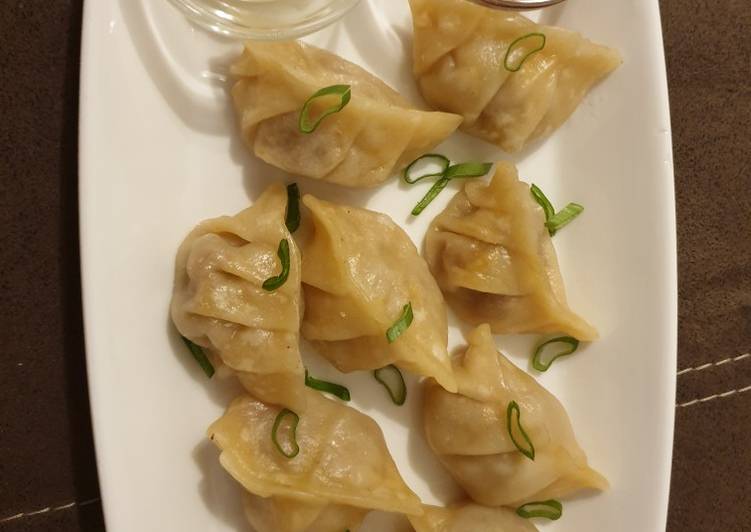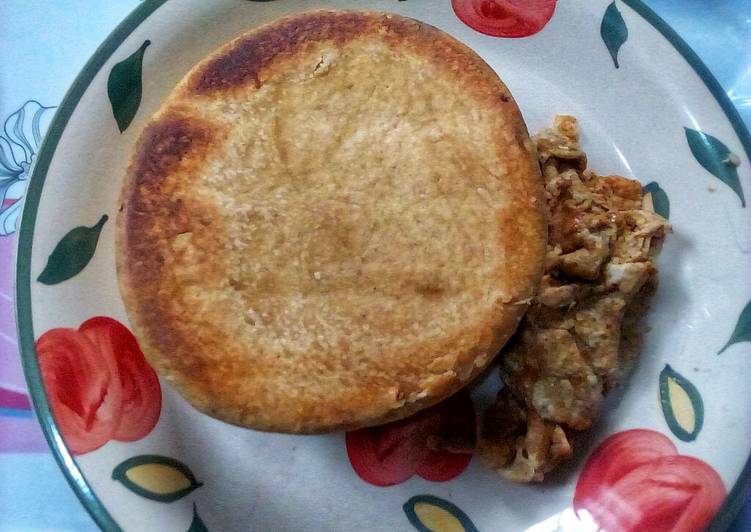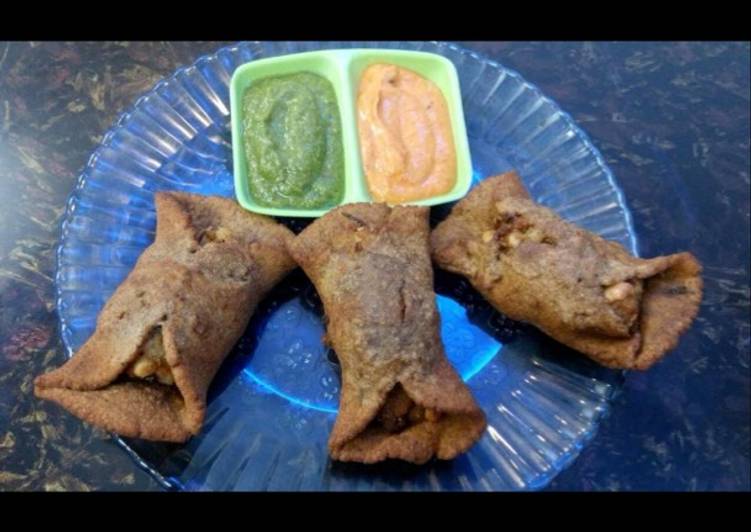
Hey everyone, I hope you’re having an incredible day today. Today, I will show you a way to prepare a special dish, gyoza (japanese potsticker). It is one of my favorites food recipes. This time, I will make it a little bit unique. This will be really delicious.
Gyoza (Japanese Potsticker) is one of the most popular of current trending foods on earth. It’s enjoyed by millions daily. It is easy, it is quick, it tastes delicious. Gyoza (Japanese Potsticker) is something which I have loved my whole life. They are fine and they look wonderful.
This Japanese Gyoza recipe is my mothers', and it's a traditional, authentic recipe. Juicy on the inside, a golden brown and crispy base, these are made in a skillet and are one of. Juicy on the inside, crispy and golden brown on the outside, these Japanese pan-fried dumplings, Gyoza, are popular weeknight meal as well as a great.
To begin with this recipe, we have to first prepare a few ingredients. You can have gyoza (japanese potsticker) using 12 ingredients and 9 steps. Here is how you cook that.
The ingredients needed to make Gyoza (Japanese Potsticker):
- Take 1 1/2 cups green cabbage, very finely chopped
- Prepare 1 tsp salt, separated
- Prepare 500 g ground mince beef
- Prepare 1 cup garlic chives, finely chopped
- Prepare 1 garlic cloves, crushed
- Take 1 tsp ginger, grated
- Get 1 tsp sesame oil
- Make ready 1 tbsp cornstarch / corn flour
- Make ready 2 tsp soy sauce
- Take 1 tsp cornflour (cornstarch) - for tray
- Prepare 40-45 round wonton (gyoza) wrappers
- Take 3 tbsp vegetable oil (or other cooking oil)
Although they're prepared in much the same. Japanese gyoza are like Chinese dumplings and potstickers but use thinner skins and finely ground meat. Gyoza are a more delicate than the usual potsticker. As far as dumplings go, Japanese-style gyoza are some of the simplest to make, if only for the fact that they are almost always made with store-bought, ready-to-fill wrappers at even the best dumpling joints.
Instructions to make Gyoza (Japanese Potsticker):
- Combine cabbage and 1/2 tsp salt in a small bowl, then set aside for 20 minutes to allow the cabbage to wilt slightly.
- Place remaining Filling ingredients (including remaining 1/2 tsp salt) in a large bowl. Squeeze out any excess water from the cabbage and add to the bowl.
- Use your hands to mix the Filling. Sprinkle a baking tray with 1 tsp of cornstarch / cornflour.
- Place 1 gyoza wrapper on your palm (left hand for right-handed people). Dip your finger in water and run it around the edge of half the gyoza wrapper (to seal).
- Place 1 slightly heaped tbsp of Filling on the wrapper. Fold wrapper over and use your right hand assisted by your left hand thumb to create 4 pleats. Press to seal and place on the tray. Repeat with remaining wrappers.
- Heat 1 tbsp oil in a large skillet (that has a lid) over medium high heat. - Place about 12 gyoza in rows, slightly overlapping each other. Cook until the underside is light golden, then pour 1/3 cup of water around the gyoza and place the lid on.
- Cook until the water has completely evaporated (so the golden underside is not wet and soggy) and the wrapper is slightly translucent on top - about 3 to 4 minutes.
- Plate and serve.
- Please don't forget to tag @appetizing.adventure on Instagram if you try this recipe!
Juicy on the inside, crispy and golden brown on the outside, this Gyoza recipe serves up Japanese pan-fried dumplings. A popular weeknight meal as well as a great. Gyoza are small Japanese dumplings which have been filled with ingredients like A Guide to Gyoza - Tasty Japanese Dumplings! A wide variety of japanese gyoza options are available to you, such as condition, applicable industries, and warranty. Gyoza no Ohsho restaurant in Japan at Monzen-Nakachō Station.
So that’s going to wrap this up with this special food gyoza (japanese potsticker) recipe. Thank you very much for reading. I am confident you can make this at home. There’s gonna be more interesting food in home recipes coming up. Don’t forget to bookmark this page in your browser, and share it to your family, friends and colleague. Thank you for reading. Go on get cooking!


